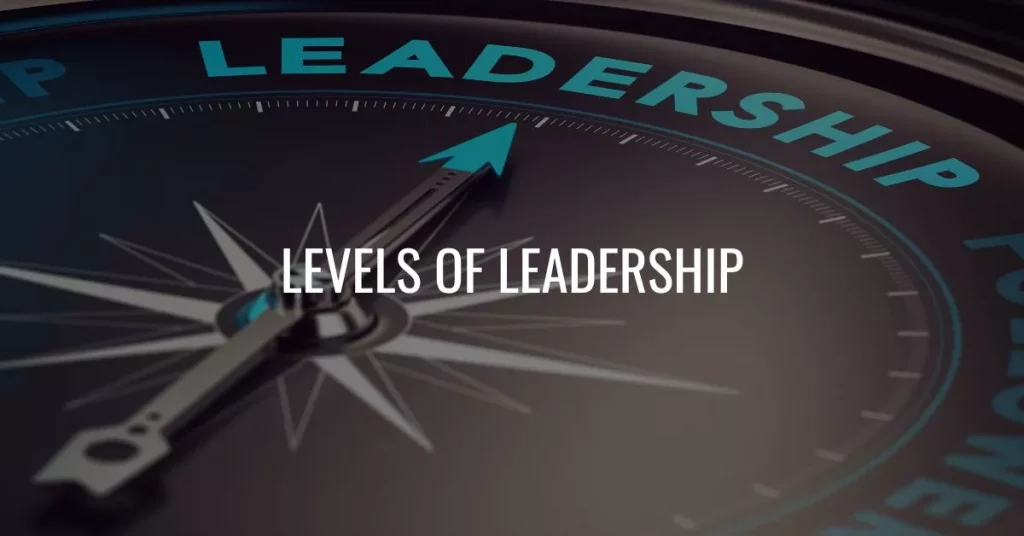5 Levels Of Leadership
The leaders aren’t the same they’re different and they aren’t on the same level; there are leaders better than others; so in this article, we’ll illustrate the leadership levels and how can you transit between them.
Level one: the position level
You will be in level one of leadership When you have a new title or position in your company; or in other words, when you have a title, you have a position of leadership and the people follow you because you’re their supervisor or manager and that doesn’t mean that you’re a leader.

- The position doesn’t make you a leader but if you’re a good leader, you can really make a good position.
- In level one the people will give you the least amount of their time, effort, energy, and mind, they follow you because you have a title or position and they don’t follow you because they like you.
- At the position level solving problems is difficult because you will face the problems alone and the people will not be with you.
- In level one, the relationship between you and the people is not good or the relationship is for only their job.
So in this level, you have to go to level number two and you have to develop your relationship skills and be connected with the people to be a leader.
Level two: permission level
In level two the people give you permission to lead them because you have a good relationship with them.
In level number two the people follow you because they like you and they want to follow you; you have a good relationship with them and you’ve connected with them because the relationships with people are the foundation of leadership.
In level two the people will give you some of their time, effort, energy, and mind and follow you because they like you and they want to follow you.
To be a leader you should make good relationships with the people by listening, observing, and learning them to have an influence them:
- The leader listens well to the people and is connected with them; he knows their problems and feels their suffering of the people.
- The leader observes and watches the people; where the people are, what they’re doing, what they like and what they dislike.
The leader observes the people because he knows that behavior tells you more than anything else.
- The leader teaches the people what they want to learn and what they should learn, he develops their experiences and knowledge.
A leader leads everyone differently because he knows that people have different reasons to follow him; before the leader leads anyone he should know his key; maybe by listening, observing, or asking the people.
The leader serves the people, knows how to serve, and loves to serve the people; he doesn’t want people to come up to him and doesn’t wait for the people to connect with him; he goes down to the people and connects with them then takes them to the top; he and they go to the top together.
Level three: production level
In level thee people follow us because of what we’ve done for the organization; before asking people to follow, you should give them reasons to follow you.
At this level, the people follow you because you’re successful and they know that you’re successful so they want to succeed like you so they follow you not for you but for themselves.
At this level, the leader produces himself as a leader to the people by successful results not by words but by results.
At the production level, the people give you more of their time, effort, power, and mind and you will be able to solve problems easier because the people face the problems with you and you have big momentum from them.
Level four: developing level
People follow you because of what you have done for them as part of the organization and the relationship with them is developed and became strong.
The difference between levels three and four is that in level three you have done useful things for the organization but in level four you have done useful things for the people and the organization grows by growing the people.
The leaders in level number four do the following:
- They recruit or hire good people: they know that to develop good people you have to recruit good people; they only hire people who exemplify their values.
It is easy to do that because they have a good clear picture of what they are looking for.
- Position people well: by putting the right person in the right position.
- equip people well to be leaders: the leaders equip people by doing the right things (teaching people) then doing the right things with them (developing people) then giving the people a chance for doing the right things alone (making leaders)
Level five: pinnacle level
In level number five the people follow you because of who you are and what you represent, they follow you because of the qualities you have.
At this level the people respect you and there’s a great amount of respect, you have qualities, anyone, and they believe in you so they will give you the most amount of their time, effort, energy, and mind.
Level five requires not only effort, skills, and intentionality, but also requires a high level of talent.
Note that:
- When you go to level two you still have a position, when you go to level three you still have position and permission, when you go to level four you still have position, permission, and production; and when you go to level five you still have position, permission, production and developing.
- If you are a supervisor or have a position you aren’t on the same level with all people, but you’re on different levels with different people. Because the relationships and reactions of people are different
In other words, your relationships aren’t the same with all so if you’re the supervisor of the team (12 persons) you won’t be on one level with all
but you’re already on level one with all, not all of 12 persons will go with you to level two and so on and so on…..

Patrick is a lifelong learner and personal development blogger whose work focuses on mindset shifts, emotional growth, and the hard-won lessons from real-life challenges.
Qualities: Relatable, honest, introspective, growth-oriented.
